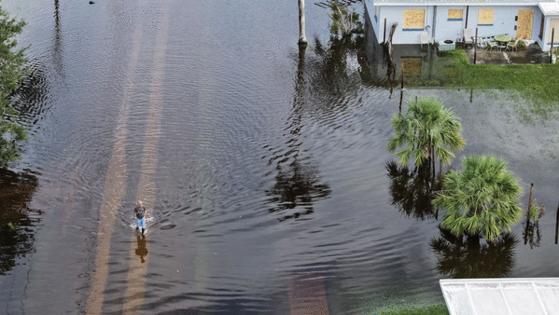US hurricane forecast: 'Everything is in place' for another above-average season
Published in News & Features
The Atlantic Ocean is likely to churn out another above-average hurricane season, thanks to warmer-than-usual sea temperatures, according to the latest forecast from the National Oceanic and Atmospheric Administration.
NOAA predicts that the 2025 hurricane season could see 13 to 19 named storms, six to 10 of which could strengthen into hurricanes and three to five of which could become major storms — Category 3 or higher.
This season, NOAA expects the Atlantic to be stocked with hot water and less storm-destabilizing wind shear than usual. And on top of that, there’s likely to be more activity from the West African Monsoon, the starting point for the “conveyor belt” of storms that swirl across the Atlantic.
“Everything is in place for an above-average season,” said Ken Graham, director of the National Weather Service, at a press conference Thursday morning.
Graham reminded coastal residents that, no matter the forecast, it only takes one storm to cause a disaster.
“There’s no such thing as Hurricane Justa. There’s no such thing as “just” a Category 1 or “just” a Category 2,” he said. “Even a small one puts lives in danger.”
Graham also noted that climate change — which warms the ocean, feeding hurricanes — is playing a role in intensifying the damage hurricanes do, along with increased populations in vulnerable coastal areas. He specifically called out how climate change is linked to stronger rainfall, which can lead to inland flooding.
“You are seeing a situation where the rainfall rates are higher,” he said.
Hurricane season officially begins June 1 and ends November 30.
‘We are ready to go’
This year, the United States is facing the upcoming hurricane season with an understaffed National Weather Service — including more than a dozen vacancies in Florida meteorology offices — and confusion within the Federal Emergency Management Agency, which has moved to cut pre- and post-storm aid to local governments.
Laura Grimm, the acting administrator of NOAA, directed “very specific questions” on staffing levels at NWS offices to other agencies but talked up the new technology the agency plans to deploy this hurricane season, including new ocean-faring drones overseen by the University of Miami’s partnership with NOAA and the newest hurricane model, HAFS.
“We are fully staffed at the hurricane center, and we are ready to go,” she said. “We are making this a top priority of this administration. We are very supportive of our national weather staff.”
Miami Herald reporting found the Miami-based National Hurricane Center has lost at least one meteorologist and three support staff since the federal cuts began, alongside two long-standing vacancies, although officials at the NHC and NWS declined to confirm or comment on the staffing loss.
CNN reported last week that the NWS is seeking to fill 155 “critical positions” at offices throughout the country through reassigning current staff. But despite the cuts, Graham pledged that the agency was ready to respond to this season’s hurricanes.
“We had some folks go, but we’re going to make sure we have everything on the front lines. Every warning is going to go out,” he said.
When asked if the current staffing shortages would affect the accuracy of storm forecast models, Graham was emphatic.
“The answer is no,” he said.
By the numbers
NOAA’s latest forecast is closely aligned with most of the other leading commercial and academic preseason forecasts, including Colorado State University, WeatherTiger and the European Centre for Medium-Range Weather Forecasts. Each calls for a range stretching from an average season to a slightly above average season.
NOAA predicted that 2024 could see more storms than ever before, issuing one of its highest-ever forecasts. The agency predicted there could be 17 to 25 named storms, eight to 13 of which could become hurricanes and four to seven that could reach major hurricane status.
Reality was less dire than the extreme end of the forecast, but it was still well within the range NOAA predicted.
“It was right on the money,” Grimm said.
Last year, there were 18 named storms. Of those, 11 strengthened into hurricanes and five became major hurricanes — including the massively destructive Hurricanes Helene and Milton and Hurricane Beryl, the earliest Category 5 storm on record.
_____
©2025 Miami Herald. Visit miamiherald.com. Distributed by Tribune Content Agency, LLC.







Comments